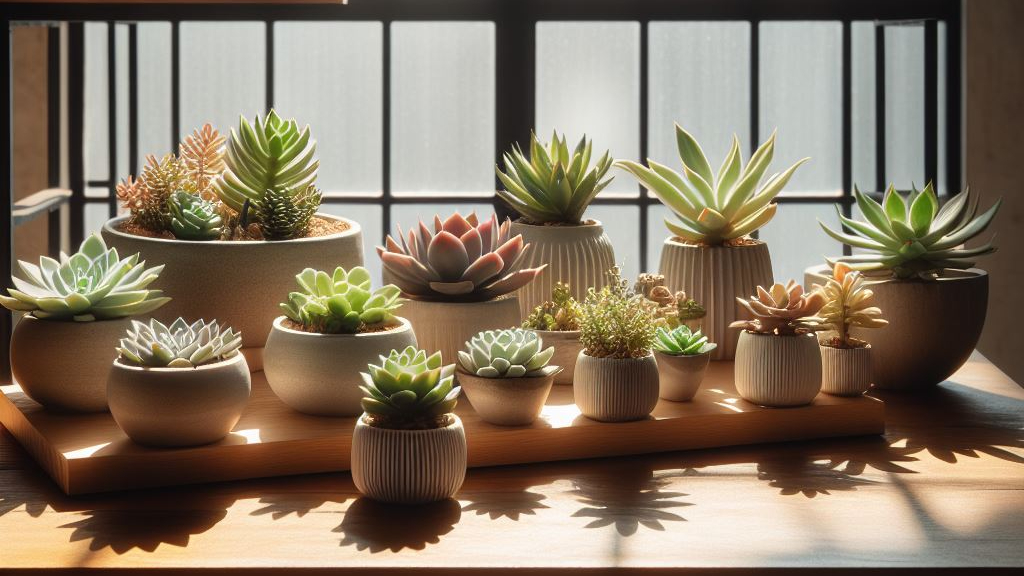Last updated on March 8th, 2024 at 05:34 am
Succulents are a popular choice for indoor gardens due to their beauty and low maintenance requirements. However, in spaces with limited natural light, their preference for abundant sunlight can pose challenges. Fortunately, there’s a variety of low-light succulents that thrive indoors, bringing life to even the darkest corners of your home. By exploring these resilient plants, you can create a thriving indoor oasis without the need for direct sunlight. With proper care and attention, these low-light succulents can flourish, offering the joy of indoor gardening even in dimly lit settings.
Contents
- 1 Choosing the Right Low-Light Succulents:
- 2 Popular low-light succulents indoor
- 3 FAQs
- 3.1 Can low-light succulents survive without direct sunlight?
- 3.2 How often should I water low-light succulents indoors?
- 3.3 What are some popular low-light succulents for indoor gardens?
- 3.4 Can I grow low-light succulents in rooms with few windows?
- 3.5 How can I prevent my low-light succulents from becoming leggy?
- 3.6 Are low-light succulents suitable for beginners?
- 4 Creating a Lush Oasis: Conclusion
- 5 Author
Choosing the Right Low-Light Succulents:
When selecting succulents for low-light conditions, it’s essential to choose species that are well-suited to thrive in such environments. Some succulents naturally require less light than others, making them ideal candidates for indoor cultivation. Here are a few popular low-light succulents to consider:
Popular low-light succulents indoor
Snake Plant:
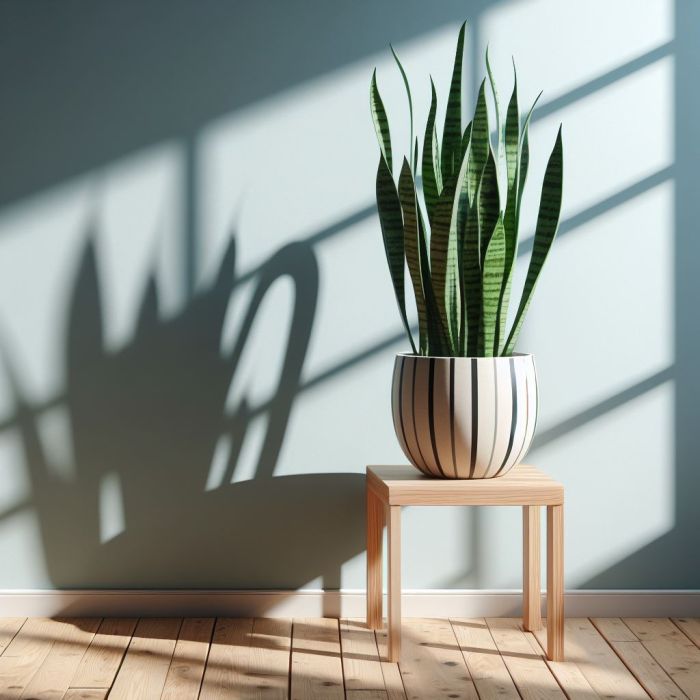
The Snake Plant, also known as Dracaena trifasciata or Sansevieria trifasciata, features sharp, sword-like leaves earning it the nickname “mother-in-law’s tongue”. Originating from Africa, it’s prized as one of the hardiest low-light indoor plants. With various sizes available, there’s a Snake Plant suitable for any space. Its long, flat leaves come in different shades of green, enhancing any room’s decor.
Care Tips:
Thriving in bright or low light, the Snake Plant adapts well to indoor settings. Its minimal watering needs and low maintenance make it ideal for beginners. Ensure well-draining soil and sparse watering to prevent overwatering, a common issue for succulents.
ZZ Plant:
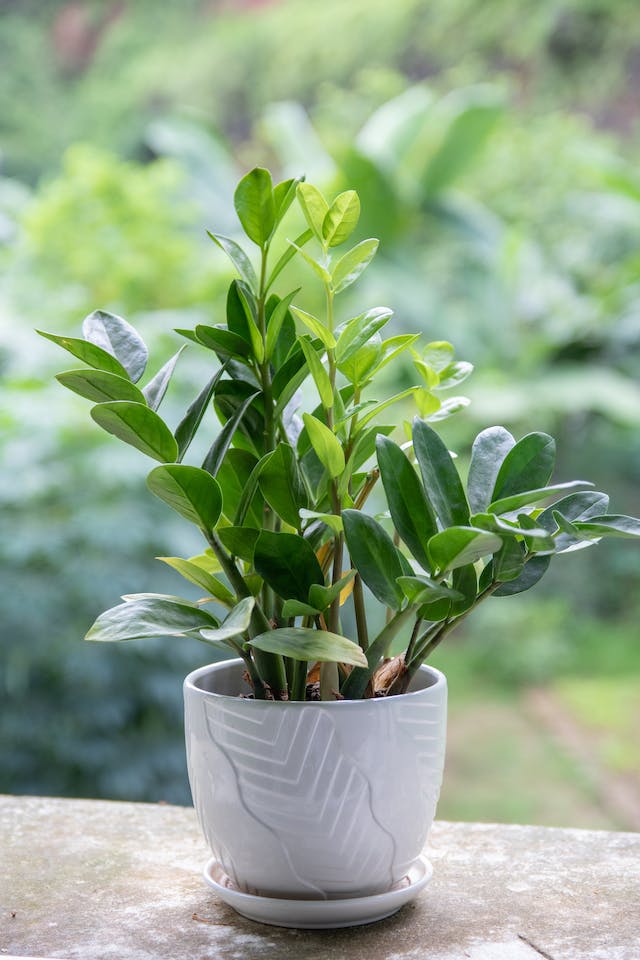
The ZZ Plant, scientifically known as Zamioculcas zamiifolia, is characterized by its glossy, dark green leaves, which lend an elegant touch to indoor spaces. Highly regarded for its resilience and ability to thrive in low light conditions, the ZZ Plant is visually striking and versatile, making it an ideal addition to any indoor setting.
Care Tips:
Thriving in low-light environments, ZZ Plants require minimal watering and prefer to dry out between waterings. Planting them in well-draining soil is essential to prevent overwatering. One of the most resilient indoor plants, ZZ Plants can store water in their rhizomes, making them exceptionally durable. They can tolerate all light conditions except full darkness, making them suitable for a variety of indoor settings. With a mature size of up to 4 ft. tall, ZZ Plants offer a low-maintenance, stylish addition to any indoor garden.
Haworthia:
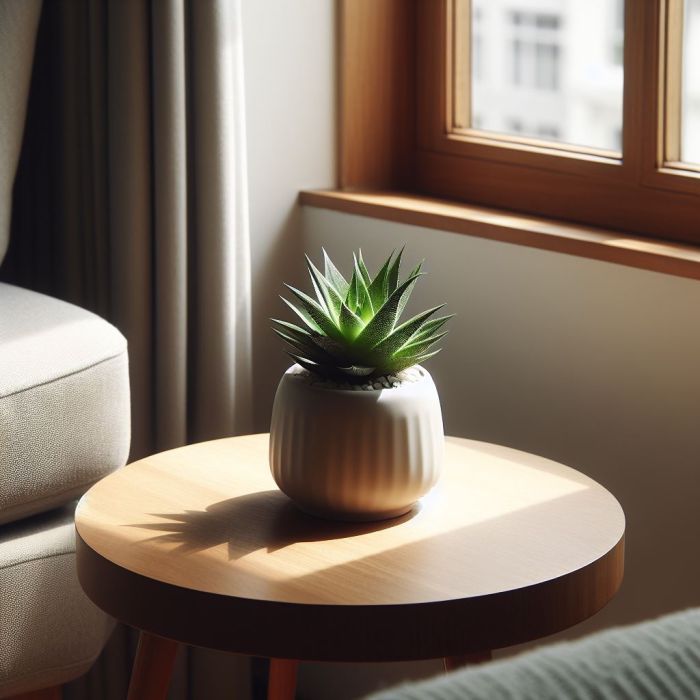
Haworthias, belonging to the Haworthia spp., exhibit a diverse array of shapes and sizes, featuring rosette-like formations of thick, fleshy leaves. These plants are exceptionally well-suited to indoor cultivation and can thrive in low-light conditions, making them a popular choice for indoor gardens.
Care Tips:
Haworthias generally prefer bright, indirect light but can adapt to low-light environments with ease. They thrive in well-draining soil and require infrequent watering to prevent overwatering. Their resilience and adaptability make them an excellent choice for beginners and experienced plant enthusiasts alike.
Zebra Plant (Haworthia attenuata):
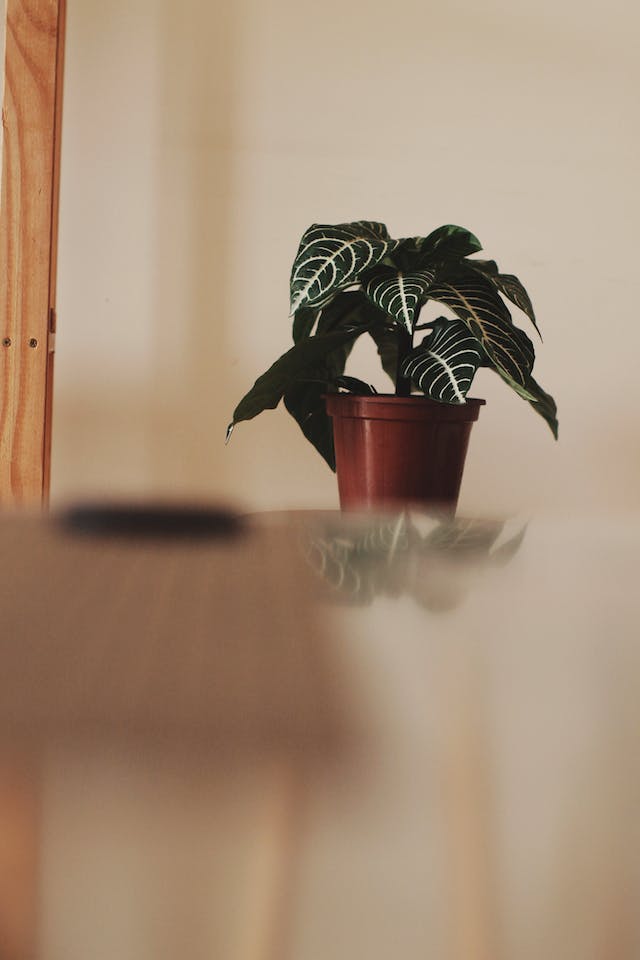
The Zebra Plant, scientifically known as Haworthia attenuata, earns its name from its striking white-and-green striped, pointy leaves. This succulent is perfect for beginners, as it can handle a wide range of light conditions, from high to low light. The slender, spike-tipped leaves resemble a petite aloe plant, adding visual interest to any indoor space. Zebra plants are slow growers and produce small offsets that can be easily divided and potted up. In low-light areas, they may lean towards the sun, so rotating the pot periodically ensures even growth. With minimal watering needs, typically once a month, the Zebra Plant is an excellent choice for any low-light area.
Care Tips:
The Zebra Plant tolerates low light but prefers full or partial light for optimal growth. Well-draining soil is essential for its health and vitality. With a mature size of up to 5 inches tall, this hardy succulent adds beauty and character to indoor spaces with minimal maintenance requirements.
Aloe Vera (Aloe barbadensis):
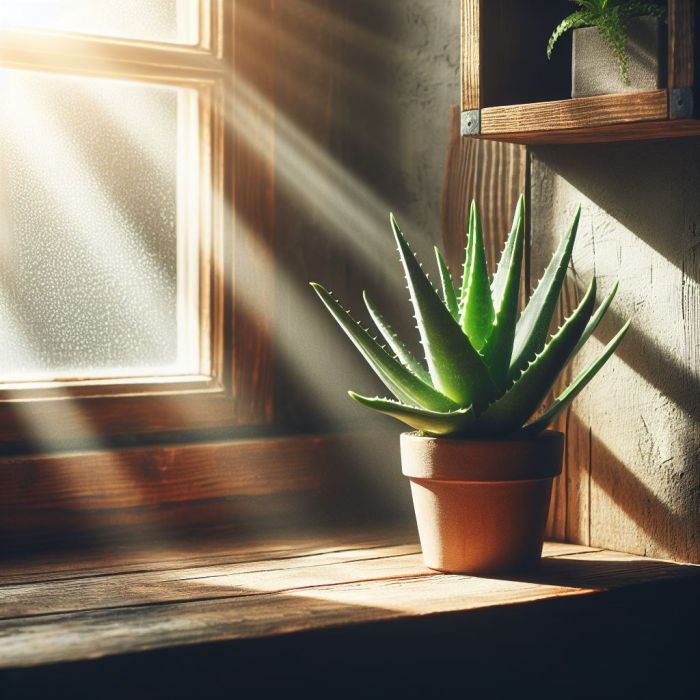
Aloe Vera, also known as Aloe barbadensis, is cherished for its healing abilities, earning it names like “burn plant” or “medicine plant”. Originating from northeast Africa, these slow-growing succulents produce small offset shoots beside the mother plant.
Care Tips:
Maintain bright indirect light throughout the year, providing direct sun in winter. Keep the soil lightly moist in spring through fall, allowing it to dry somewhat in winter. Protection from direct sun is necessary if moved outdoors in summer to prevent leaf burn.
Gasteria (Gasteria spp.):
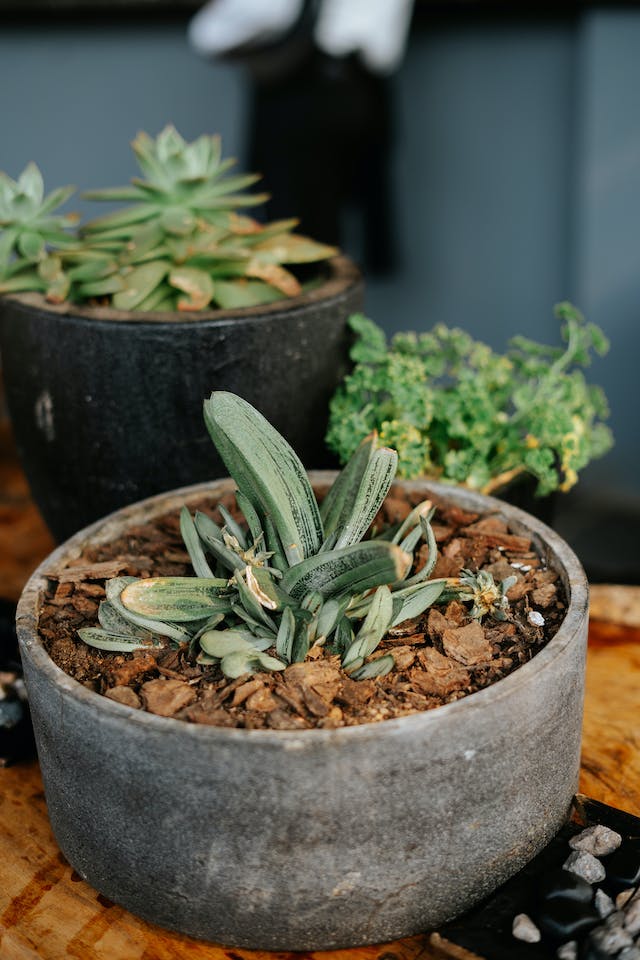
Gasterias, recognized for their small, compact size and thick, tongue-shaped leaves arranged in rosettes, are excellent choices for indoor cultivation. These versatile succulents can thrive in low light conditions, making them perfect for adding greenery to any indoor space, even in areas with limited sunlight.
Care Tips:
Gasterias prefer indirect sunlight but can easily adapt to low-light environments, making them ideal for indoor settings such as offices or rooms with few windows. To ensure their health and vitality, plant Gasterias in well-draining soil, preferably a succulent mix, and water them sparingly. Overwatering can lead to root rot, so it’s essential to allow the soil to dry out between waterings. With proper care, Gasterias can brighten up your indoor environment with their unique foliage and easy-going nature.
Echeveria (Echeveria spp.):
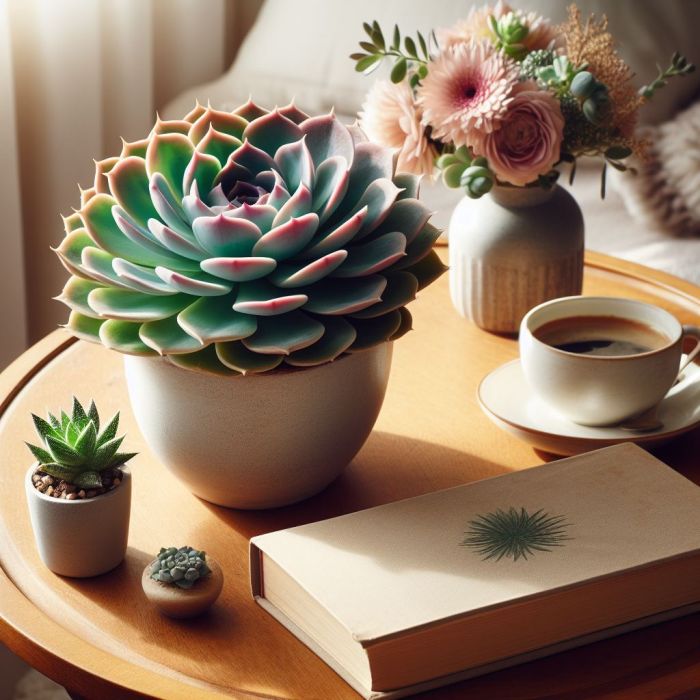
Echeverias, celebrated for their rosette-shaped foliage and vibrant hues, stand as cherished succulents, bringing allure to any indoor garden. While they typically flourish in bright light, select varieties exhibit adaptability to low-light conditions indoors, presenting versatile options for indoor gardens.
Care Tips:
Maintaining their vivid colors mandates bright, indirect light for Echeverias, yet they showcase resilience in lower light settings. Planting them in well-draining soil and practicing restrained watering are crucial steps to prevent overwatering. Though a preference for at least 4 hours of daily sunlight exists, they can endure lower light conditions when properly attended to. Periodically rotating the pot prevents the plant from elongating towards the light source. Echeverias prove to be low-maintenance, thriving even with minimal attention, particularly regarding watering practices.
Jade Plant (Crassula ovata):
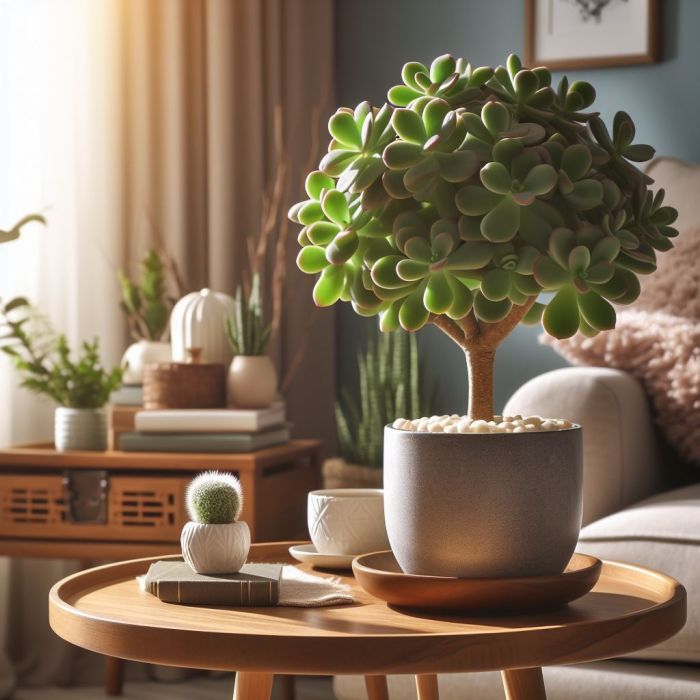
Jade plants, featuring thick, fleshy leaves and a tree-like growth habit, are classic succulents adored for their timeless beauty. Perfect for indoor cultivation, they thrive even in low light conditions, making them versatile additions to any indoor space.
Care Tips:
While preferring bright, indirect light, jade plants exhibit tolerance to lower light levels. Plant them in well-draining soil and water sparingly to prevent overwatering, ensuring their health and vitality.
Christmas Cactus (Schlumbergera spp.):
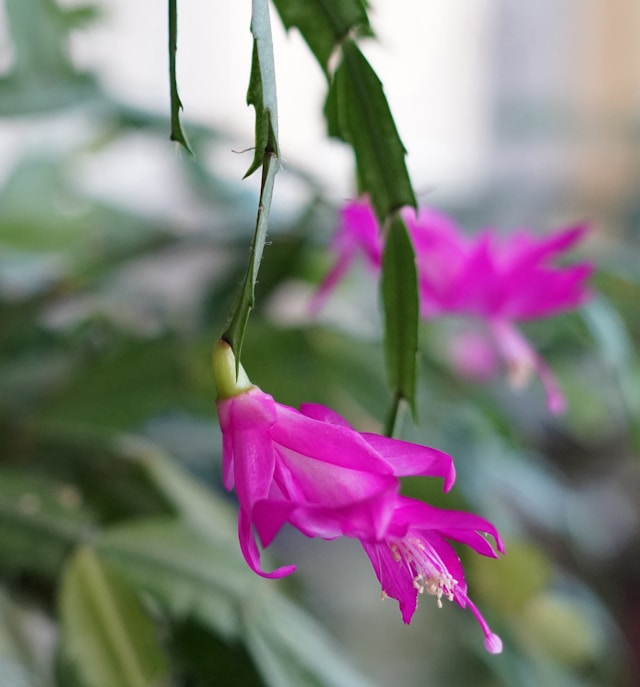
Christmas cacti, renowned for their colorful blooms and flattened, segmented stems, are popular succulents cherished for their festive charm. These plants thrive indoors, particularly in low light conditions, making them ideal houseplants for bringing holiday cheer year-round.
Care Tips:
Though preferring bright, indirect light, Christmas cacti can endure lower light levels with ease. Plant them in well-draining soil and water sparingly, especially during the flowering season, to maintain their health and vibrant blooms.
Peperomia (Peperomia spp.):
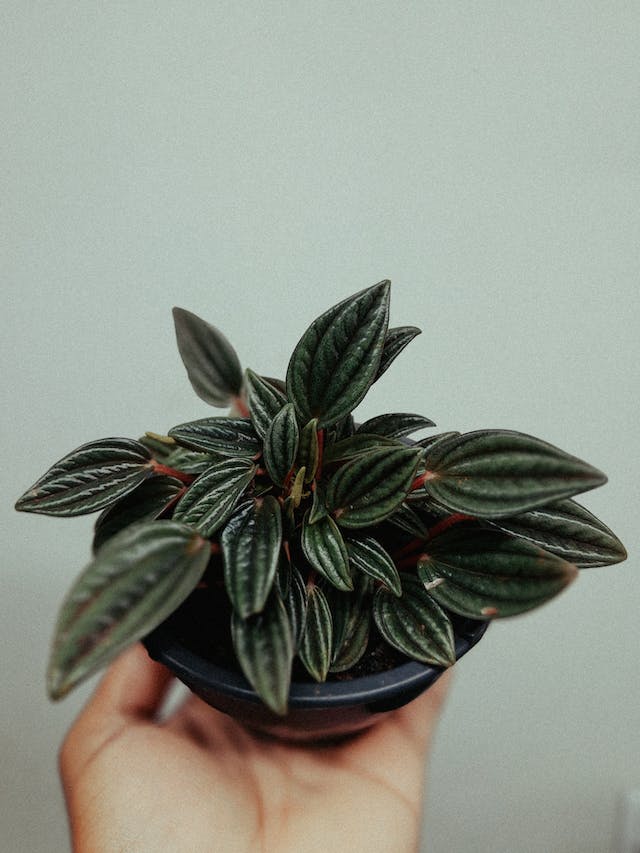
Peperomias, characterized by their thick, fleshy leaves and diverse textures and colors, are delightful succulents adored for their unique beauty. Some species can tolerate low light conditions indoors, making them popular houseplants for indoor gardens.
Care Tips:
Though preferring bright, indirect light, Peperomias can adapt to lower light levels. Plant them in well-draining soil and water sparingly to prevent root rot, ensuring their health and vibrancy in indoor settings.
FAQs
Can low-light succulents survive without direct sunlight?
Yes, many low-light succulents are well-adapted to indoor environments with limited natural light and can thrive without direct sunlight.
How often should I water low-light succulents indoors?
Low-light succulents typically require infrequent watering, as they are adapted to storing water in their leaves. Water sparingly to prevent overwatering, which can lead to root rot.
What are some popular low-light succulents for indoor gardens?
Popular low-light succulents for indoor gardens include Snake Plant, ZZ Plant, Haworthia, Jade Plant, Christmas Cactus, and Peperomia.
Can I grow low-light succulents in rooms with few windows?
Yes, many low-light succulents can thrive in rooms with limited natural light, making them suitable for spaces with few windows or dimly lit areas.
How can I prevent my low-light succulents from becoming leggy?
To prevent leggy growth in low-light succulents, rotate the pot regularly to ensure even exposure to light. Additionally, providing bright, indirect light when possible can help maintain compact growth.
Are low-light succulents suitable for beginners?
Yes, low-light succulents are often recommended for beginners due to their resilience and low maintenance requirements. With proper care, they can be easy to grow and maintain indoors.
Creating a Lush Oasis: Conclusion
With a variety of low-light succulents, you can effortlessly bring life to even the darkest corners of your home. From the resilient Snake Plant to the elegant ZZ Plant, these indoor beauties thrive with minimal care, making them perfect for beginners and experienced gardeners alike. By choosing these adaptable plants, you can create a serene and lush indoor oasis, transforming any space into a haven of greenery and tranquility.

